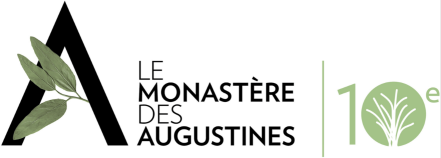A lottery as a source of financing
In July 2019, Le Monastère des Augustines launched its first Loto-répits (Respite Lottery) to raise funds for its respite care program benefitting caregivers. Turning to a lottery as a funding activity may seem surprising, but it’s a relatively old practice. The Augustinian Sisters have used it in the past, notably in 1871 to support the foundation of the Hôtel-Dieu du Sacré-Coeur in Québec. A more recent example is linked to Maison Catherine de Longpré, a private hospice co-founded by the Saint-Georges Augustinian Sisters. Here’s a look at the history of the organization, and how lotteries pertain to its foundation and running.
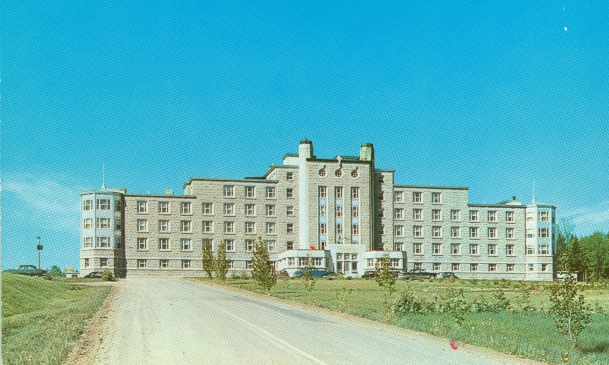
© Archives du Monastère des Augustines
Maison Catherine de Longpré
In the early 1980s, Cyprienne Morissette wanted to offer a similar service to that of Québec City’s Maison Michel-Sarrazin, but for the Beauce region. Its mission: provide palliative care to cancer patients. It’s important to note that palliative care is a relatively recent notion in the West. In Québec, it only appeared around the 1970s[1]. Mrs. Morissette’s idea was aligned with a new school of thought at the time.
Mrs. Morisette was quickly contacted by pharmacist Louise Sévigny, surgeon Denis Breton, as well as Sister Gertrude Lortie—the Saint-Georges Augustinian Sisters’ superior at the time—who all worked with cancer patients. Together, the group made the project a reality, and opened Maison Catherine de Longpré in homage to Catherine de Saint-Augustin (1632-1668), an Hôtel-Dieu de Québec Augustinian Sister born Catherine de Longpré.
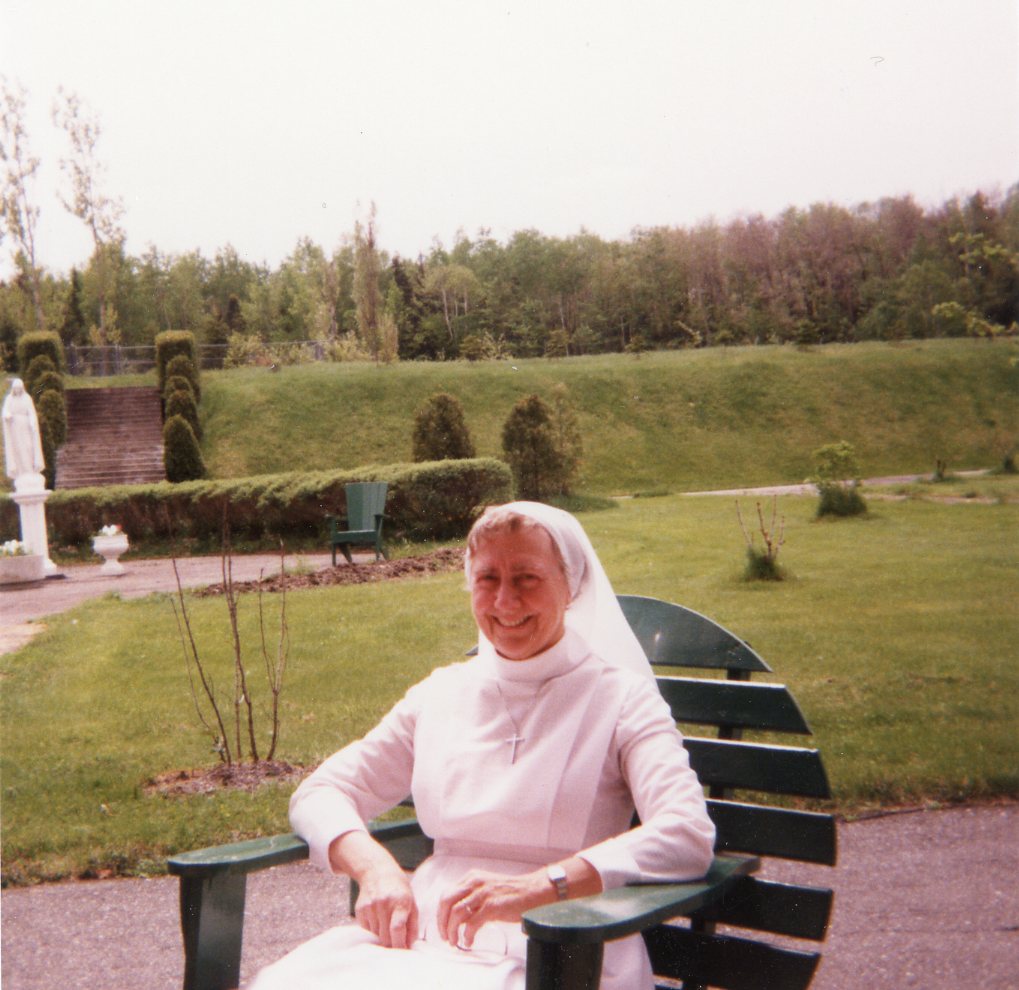
Fonds Monastère des Augustines de l’Hôtel-Dieu de Québec
© Archives du Monastère des Augustines
Ensuring quality end-of-life care
In the beginning, the project’s mission was to launch a network to care for end-of-life and cancer patients either at the future Maison Catherine de Longpré or at their home. The idea was to put together a multidisciplinary team consisting of healthcare professionals, volunteers, social workers, pastoral workers, etc. The goal was to control pain, fight loneliness, improve quality of life, and support patients and their families through the end-of-life process.
These days, the mission of the centre has expanded without veering away from Mrs. Morisette and her partners’ original intentions. As can be read on the organization’s website (French only), “Our mission: to provide end-of-life patients and their loved ones with the best quality of life possible, as though they were in the warm atmosphere of their own home”. It’s a wonderful example of Augustinian Sister-worthy hospitality. What role did the Augustinian Sisters play in launching this type of project?
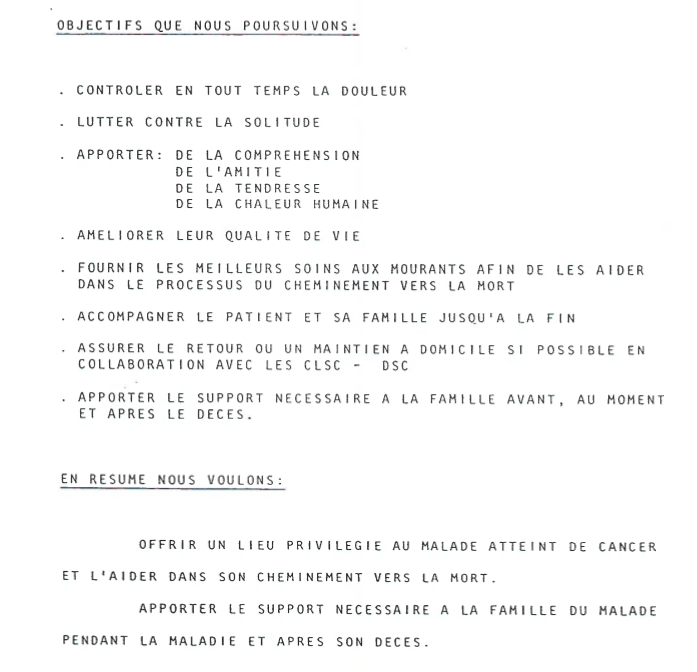
Fonds Maison Catherine de Longpré (HDB-B1-F5,4_4)
© Archives du Monastère des Augustines
The Saint-Georges Augustinian Sisters’ contribution
The Saint-Georges, Beauce Augustinian community played a very important role in the centre’s founding and running during the first years. The sisters worked as volunteers, playing a role in the management of the organization, and caring for patients. Part of the monastery was also rented out, and the community absorbed the operational costs of the project until 1995, when the Fondation Catherine de Longpré bought the buildings and land.
Considering the community was made up of only eight nuns during the 1980s, the monastery was way too big for its actual needs. A full floor was rented out to the Fondation for the symbolic price of $1. In a project document dated June 1986, the reorganization work was estimated at $250,000[2], which explains a huge need for funds. In fact, as a private organization, Maison Catherine de Longpré was likely unable to benefit from public financing, possibly excluding a seed grant. It was therefore necessary to find viable sources of revenue to support the Augustinian Sisters and Foundation. The fledgling organization turned to the generosity of the local population.
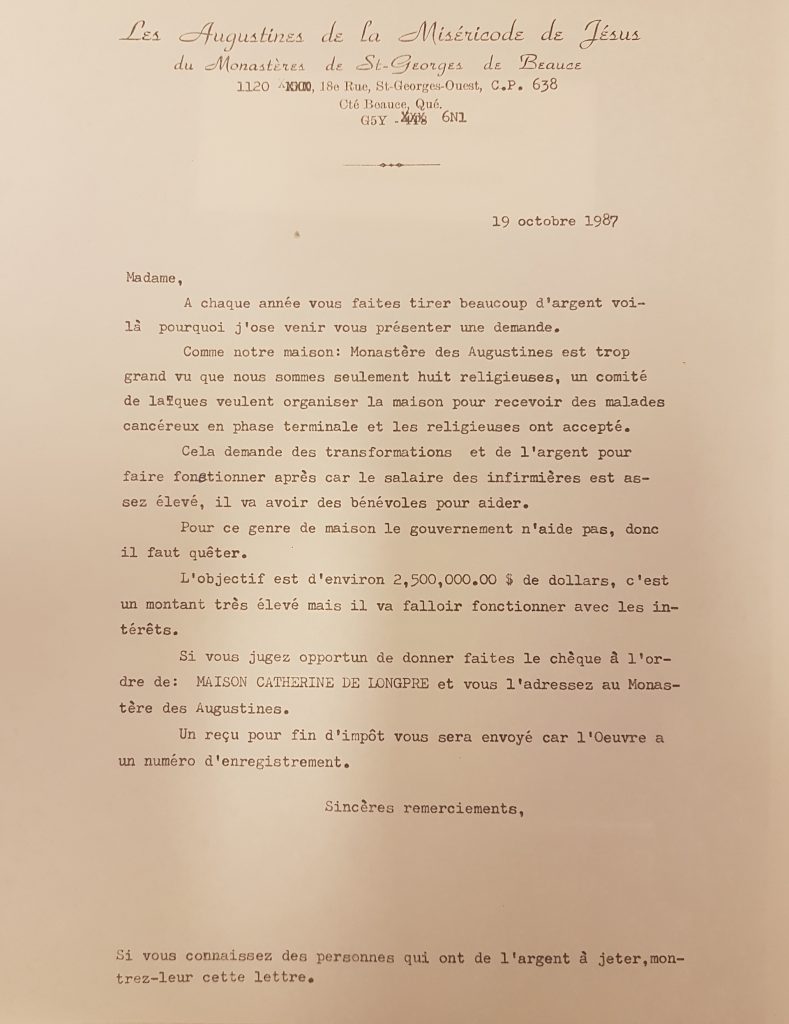
Fonds Maison Catherine de Longpré (HDB-B1-F5,4:3)
© Archives du Monastère des Augustines
The search for funds
When the project was still in its first stages, the idea of a public offering was submitted. A radiothon was one example of the financing activities that were suggested. In 1988, a fundraising campaign called “La Grande corvée” (“the great chore”) was organized, with the goal of raising two million dollars[3]. Thanks to 1000 volunteer solicitors, a total of $2,108,044 were raised in six months’ time. This amount was enough to open Maison Catherine de Longpré in November 1989.
Despite the success of “La Grande corvée”, it became necessary to find recurring sources of funds. This is where the idea of an annual lottery came about. The first edition took place in 1991 and since, it has been the Maison’s main financing activity. In a budget estimate document dated 1992 to 1995, we learn that the goal of the lottery was to raise $25,000 per year. In comparison, the Augustinian Sisters planned to give $40,000 yearly. This revenue was necessary; the healthcare-, medicine-, and administration-related expenses were estimated at around $325,600 per year on average.
In the end, the financial goals had to be revised and increased. In 1993, the lottery goal had almost doubled. Sister Gertrude Lortie, president of the Maison, wrote in a bulletin that the goal was $55,000, indicating that “The aim of this lottery is to fill the lack in funds caused by the current [economic] recession. In the long run, it will ensure necessary funds for the administration of the Maison.” Around 11,000 flyers were distributed in the 50 parishes that were then part of the Beauce-Appalaches territory.
It seems the local population never ceased responding positively to the call for donations. For example, in 1995, the lottery raised $73,000. Twenty-three years later, in 2018, the lottery raised $389,036. The goal for 2019 is to raise $385,000, which represents 27% of the organization’s operational budget. This demonstrates that lotteries are in fact an excellent way of financing community service projects.
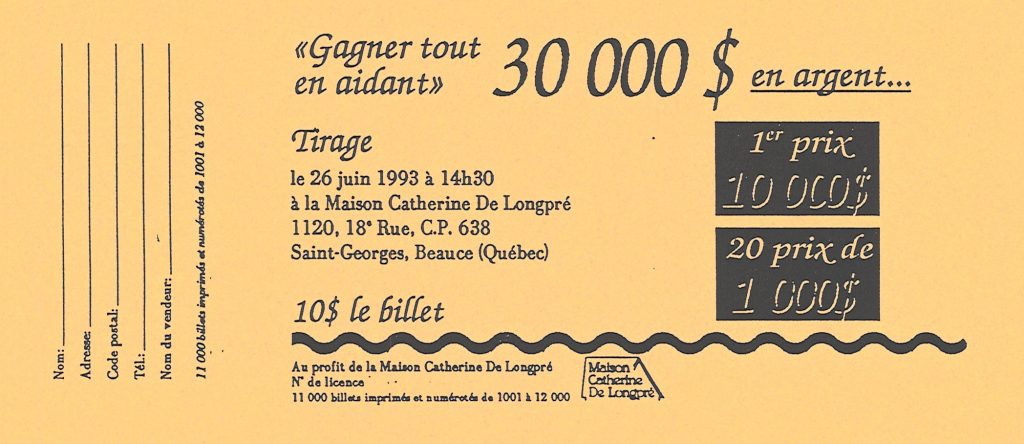
Fonds Maison Catherine de Longpré (HDB-B1-F5,4:4)
© Archives du Monastère des Augustines
The author thanks the team of Le Monastère Archives Center for their support in carrying out this research: Sara Bélanger, Annie Labrecque, Chantal Lacombe and Audrey Julien.
Hugues St-Pierre
[1]What distinguishes palliative care is its focus on “care”. Whereas traditional hospital care focuses on curing illness and preventing death, palliative care is more about guiding and supporting patients through sickness, until their death.
[2] No author, Projet. Résidence Catherine de Longpré. June 1986. HDB1-F5/4 :1.
